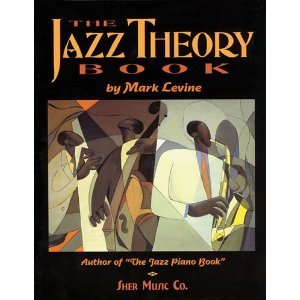Triads are ideal for comping because they are easy to finger and most of the time don't contain the root of the chord (which is generally played by the bass player). Before I press on; I must let you know this lesson is credited to Dirk Laukens, who is a brilliant musician and dedicated to great theory. I have been given personal permission from him to post this here. You can find the original here: Clicky In this lesson you'll see which upper structure triads work best. These guitar chord substitutions open up new sounds and give you fresh ideas. If you want to know even more about upper structure, I suggest you take a look in the excellent book "The Jazz Theory Book" (it is the true jazz theory bible) WELL WORTH IT'S MONEY!  Now, let's start with the upper structure triads for the Cmaj7 chord:
Here are the triads from the root on : C E G 1-3-5 : is not an upper structure triad because it contains only chord tones E G B 3-5-7 : is not an upper structure triad because it contains only chord tones G B D 5-7-9 : this is the first upper structure triad B D F 7-9-11 : this is not a usable upper structure triad for Cmaj7 because it contains the avoid note (11) for C major D F A 9-11-13 : this is not a usable upper structure triad for Cmaj7 because it contains the avoid note (11) for C major F A C 11-13-1 : this is not a usable upper structure triad for Cmaj7 because it contains the avoid note (11) for C major A C E 13-1-3 : this is the second upper structure triad. Some things to keep in mind : --> The upper structure triad must contain at least one tension which is not an avoid note. --> Avoid notes only play a role in major chords. --> An upper structure triad can be major, minor, diminished or augmented. --> For me major upper structure triads work best. --> You can use upper structure triads for soloing as well as for comping. --> Triads are technically non complex chord forms, but in combination with a bass player they can really open up your sound. Here's a list of upper structure triads that sound. I'll do the first one with you so you can see how the list works: The first upper structure triad in the list is for a major chord type. V means we build the upper structure triad on the 5th note (compared to the root of the chord). So in case of a C major chord the upper structure chord is G: G B D (5 7 9) V- would mean a minor triad on the 5th note. V+ would mean an augmented triad on the 5th note. bVII would mean major triad on the b7. bV are the tritone upper structures.
So hopefully this all makes more sense now! Enjoy :) Here's a guitar lick example to help you understand this more! You can check it out here: Upper Structure Triads Guitar Lick Or below :)  There's a C major arpeggio in the second bar, which sounds like b7, 9 and 11 on D minor. "The toughest thing about success is, you've got to keep on being a success. Talent is only a starting point in business. You've got to keep working that talent." - Irving Berlin __________________________________________________________________________________________ Also, check out my music listed on Sound Cloud (link below) if you like it follow me on facebook! :) JazzMaverick on Sound Cloud JazzMaverick Music __________________________________________________________________________________________
Comments:
01
07.31.2011
02
07.31.2011
03
07.31.2011
04
07.31.2011
05
07.31.2011  JazzMaverick JazzMaverick
I bought the book probably 4 years ago now... it's pure heaven. Sometimes it still baffles me. It's a book that will definitely keep you busy for years - so even though it's expensive, it is soooo worth it.
06
07.31.2011
07
08.01.2011  Afro_Raven Afro_Raven
Great lesson, but what I'd really like to know is the progression you've got going on in the musical example? I love it!
08
08.01.2011
09
08.01.2011  DanielM DanielM
Ah I've heard of this or at least something very similar referred to before as polychords but this lesson actually put it in a way that's making me play properly with it and paying more attention.
10
08.22.2011  gshredder2112 gshredder2112
question-Is the 11th always the *avoidd* note? amd is there more
11
09.12.2011
12
02.16.2012 |


